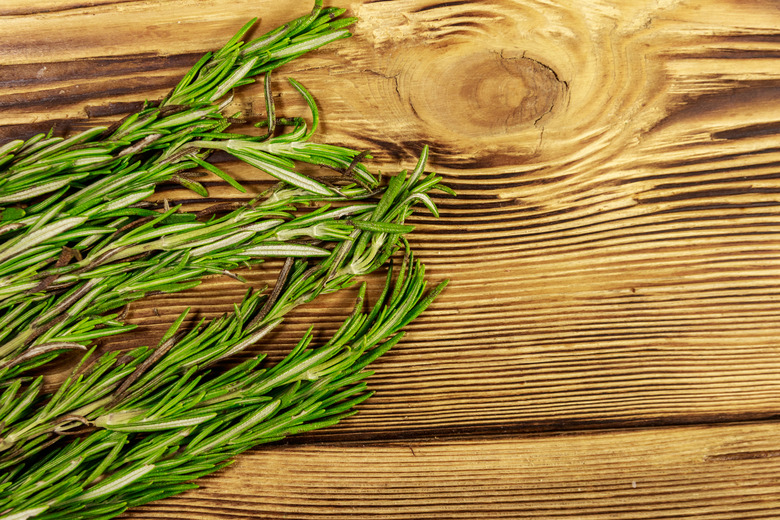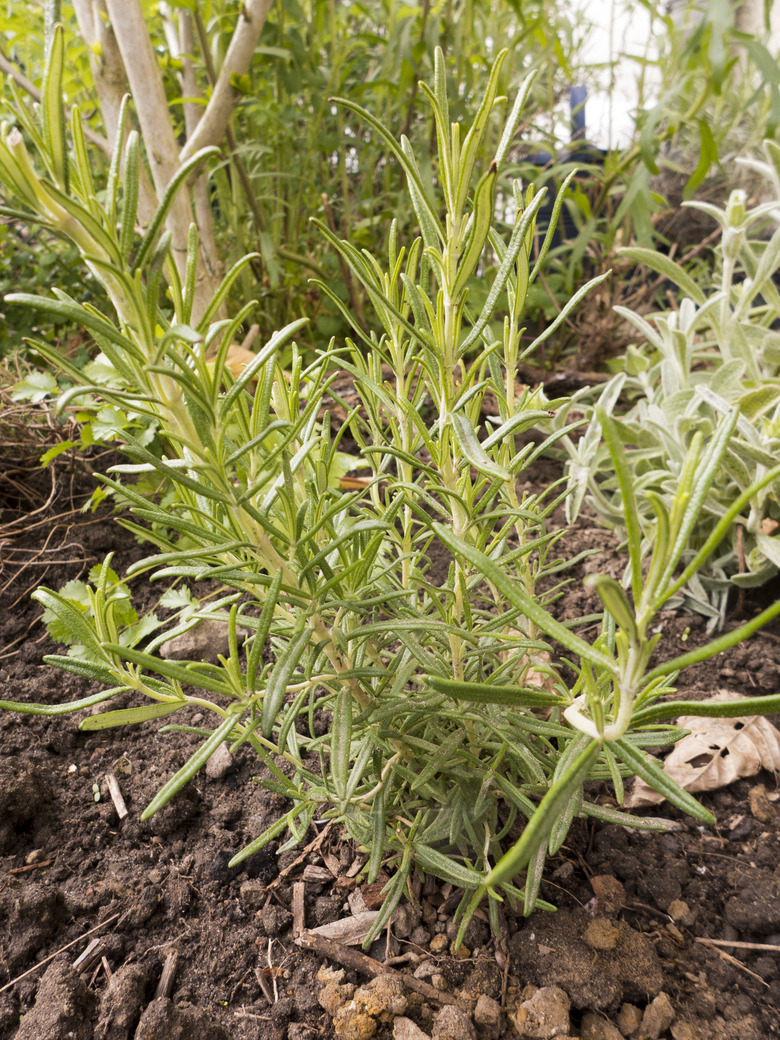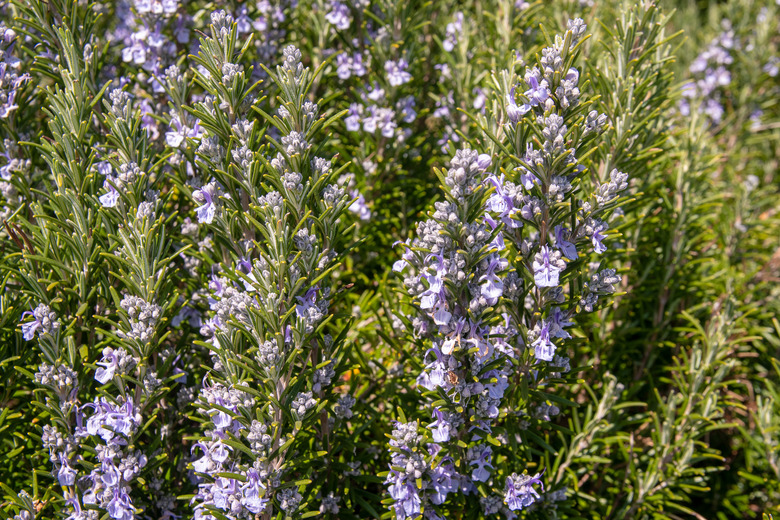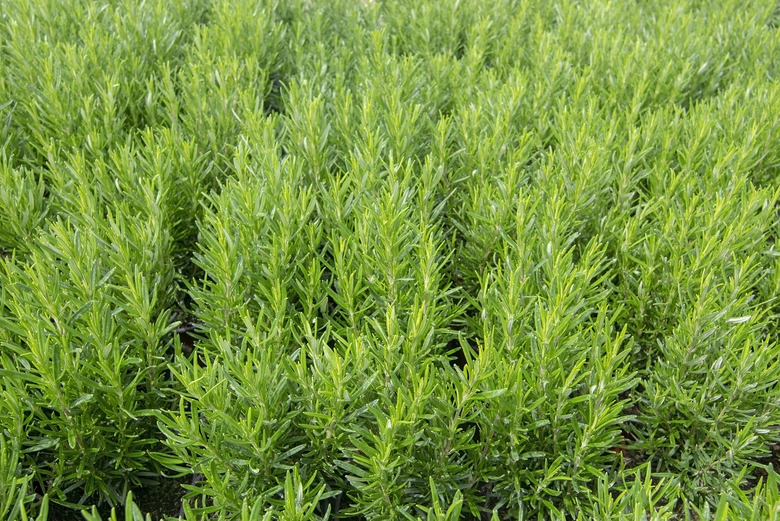How To Prune Rosemary
Rosemary packs an extra punch when used as a landscape plant: it's lush, requires little maintenance and repels some insects. Whether you're looking for an attractive perennial hedge, a creeping ground cover or a flowering plant that is also fragrant and drought-tolerant, rosemary is an excellent choice. It's also the perfect plant for the kitchen gardener, offering up its fragrant leaves as a savory addition for soups, stews and breads.
Rosemary Growth Basics
Rosemary Growth Basics
The options for rosemary plants are almost as plentiful and different as the varieties of roses available from garden retailers. When it comes to plants ideal for the garden rather than growing in portable pots, most varieties of rosemary prefer climates without cold winters, thriving in USDA plant hardiness zone 8 or warmer. One exception is Arp rosemary, an upright plant which thrives in zone 6 or warmer. Upright rosemary varieties grow up to 6 feet tall and can be used as shrubs or hedges; these also look beautiful in pots when pruned into conical tree shapes. The leaves on upright rosemary plants tend to contain the most fragrant oils and are therefore favored by the chefs who use fresh herbs in their culinary creations.
Semi-upright varieties grow up to 3 feet tall and may be a bit wider than high. Creeping or ground-cover rosemary plants seldom reach more than 2 feet high, but can spread out indefinitely in ideal conditions.
To Prune or Not to Prune
To Prune or Not to Prune
When grown as ground cover or a hedge, rosemary usually doesn't need to be pruned to stay healthy, but it may need pruning for shape. As an evergreen perennial, rosemary plants tend to develop more woody growth as they mature. Over time, the weight of such branches may spread the plant outwards, detracting from its once pleasing shape. If this occurs, cut back the leaning branches to just above a point where two leaves or another branch grows, or to just outside the branch collar. When cutting near new growth or nodes, look for the nodes, leaves or branches pointing inwards, as these will continue to grow towards the center of the plant, helping to shape the entire shrub. Use clean hand bypass pruners to make the cuts.
Regular Pruning Considerations
Regular Pruning Considerations
To help prevent a rosemary plant from looking too wild, huge and overgrown, regular light pruning is necessary. Weekly or bi-weekly pruning also helps guide the shape of the plant, whether your goal is to keep it somewhat symmetrical or train it into a tree-like form. Only trim the new growth_,_ cutting 5 inches or less off each sprig at a time. Pruning can be done any time during the growing season, but should be avoided while the plant blooms. Pruning to thin the plant also helps ensure that each sprig receives ample sunlight.
If you prefer to prune seasonally rather than every week or two, prune in early spring or mid-fall, before the weather gets cold. In the spring, wait until green growth appears, then remove dead wood from the plant with hand bypass shears. Removing this wood will also provide more space and potentially more light for new growth, as rosemary prefers lots of sunshine. Whether pruning once a season or more regularly, clearing out overgrowth in the middle of the plant helps improve airflow and sunlight reaching each sprig.
Once a rosemary plant becomes woody and gnarly without producing much new growth, it is difficult to rejuvenate. Pruning regularly can help prevent the plant from getting to this stage. If the plant still produces a few new shoots on some of the branches, feel free to try rejuvenating it by cutting out some of the old, unproductive growth. Leave at least one-third of the plant intact. Note: removing old wood from a rosemary plant also removes any chances of new growth, so any cuts made could permanently affect the plant. Rosemary is not a plant that benefits from being cut all the way down to the ground.
Harvesting Kitchen Herbs
Harvesting Kitchen Herbs
When it comes to cooking, the best thing about rosemary is that it can be trimmed any time to season your favorite dishes. Cut off a few sprigs of new green growth as needed, trimming just above where two leaves or sprigs are growing, as this will promote new growth. Don't cut the woody stems, as no new growth will happen on that branch afterwards. If you trim areas that are a bit longer than other parts of the plant, this can help shape it as well.
To harvest rosemary for drying, cut new-growth sprigs at least several inches long before the plant's flowers bloom, as this ensures the strongest flavor. Cut the stems with clean hand bypass pruners, then rinse them and pat them dry with a paper towel. Tie a bunch of stems in a bundle and hang the bundles upside down. Dry the rosemary in a ventilated location out of direct sunlight, such as on a porch. A loose mesh bag over the sprigs will keep dust and insects away. The herbs should be completely dry in about two weeks.
References
- Sunset: Which Type of Rosemary is Right for You?
- University of Florida: Rosemary
- Mountain Valley Growers: Rosemary
- Monrovia: Arp Rosemary
- Cooperative Extension Ask an Expert: Rosemary
- Epicurious: How to Dry Rosemary, Step by Step
- National Center for Home Food Preservation: Drying Herbs
- Getty Stewart: How to Cut and Dry Rosemary
- Do It Yourself: Rosemary Pruning Tips
- The Rosemary Specialist: Growing Rosemary




